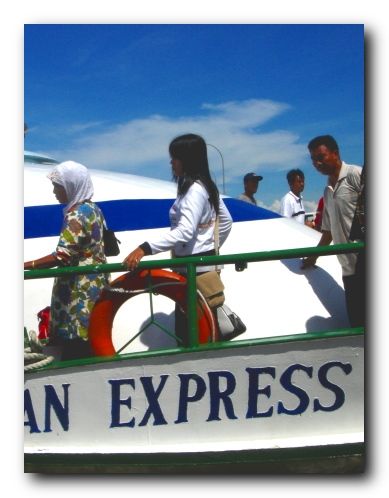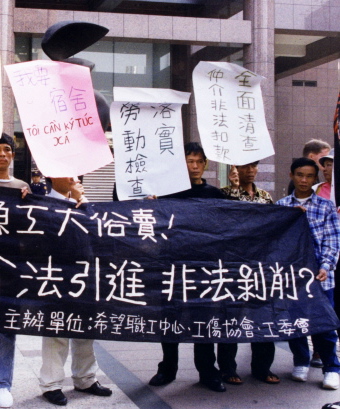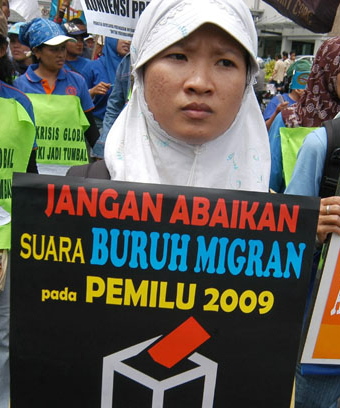Ron Witton
For most of us who have visited Indonesia, one of our lasting memories is of volcanoes, those brooding symbols of earth’s pent-up energy. Whether we have gazed at, or even climbed, Yogyakarta’s Mount Merapi, East Java’s Mount Bromo, Bandung’s Tangkuban Perahu, Bali’s Mount Agung or Lombok’s Mount Rinjani, images of smoke plumes and deep caldera and a feeling of potential disaster have always beckoned us closer and haunted our memories.
A great variety of marvellous books awaits those who wish to read about Indonesia’s volcanoes. Two of these mountains produced the most spectacular eruptions the modern world has seen: Mount Tambora on the island of Sumbawa in 1815, and Krakatoa in the Sunda Strait between Java and Sumatra in 1883. What does such a cataclysmic event mean for humanity? The answer can only really be understood from contemporaneous records. Such records were abundant when Tambora and Krakatoa erupted. They have been used to great effect by two creative authors to write two wonderful and seminal books: Gillen D’Arcy Wood’s Tambora, and Simon Winchester’s Krakatoa . Both also provide much material on Indonesian volcanoes more generally and are well worth delving into.

Long before these cataclysmic events, however, a far bigger eruption created North Sumatra’s now placid and beautiful Lake Toba, Indonesia’s largest lake. A hundred times more powerful than Tambora´s, this massive eruption of a ‘super volcano’ approximately 74,000 years ago was the biggest explosion on Earth in the last 25 million years. It ejected 2800 cubic kilometres of material and deposited an ash layer 15 centimetres thick over the whole of Southeast Asia. Much of the particulate matter rose high into the stratosphere, where it precipitated a climate-changing event. A volcanic winter saw temperatures worldwide decrease by three to five degrees Celsius, and by up to 15 degrees in higher latitudes. Although the theory is disputed, it has even been argued that it affected aspects of human evolution.

There is a treasure trove of other books on Indonesia’s volcanoes. Buck Dawson in When the Earth Explodes describes Krakatoa 1883 as ‘the loudest bang in history’. It was heard thousands of kilometres away in Saigon, Bangkok, Manila, Perth and even Alice Springs in central Australia. The explosions of Tambora and Krakatoa are the loudest events to have occurred on earth in recorded history. They rendered people living many kilometres away deaf for the rest of their lives.
Countless hundreds of thousands of people died from these eruptions. People living on land in the vicinity of the erupting Tambora volcano were killed by boulders and burning ash falling from terrifying pyroclastic clouds. Tens of thousands subsequently died from famine and disease related to the eruption. Krakatoa destroyed an entire island. An incomprehensibly enormous, towering wave, many, many times more powerful than that which hit Aceh in 2004, then inundated countless villages on nearby Java and Sumatra. It was propelled from the epicentre at over 600 kilometres per hour and was of such strength that it circled the globe many times, its passage being recorded as it affected tidal movements in the Americas and in Europe. The sea within 100 kilometres of Krakatoa was covered by a two-metre high layer of pumice impeding navigation for some time.
Indonesia’s volcanoes are part of the Pacific’s ‘Ring of Fire’. To understand them, one is of course drawn into the field of plate tectonics. One of the many engaging accounts of the dynamics of the earth’s surface is Ian Burnett’s Where Australia Collides with Asia, which has a particular focus on Indonesia.
Given current global concern with climate change, there is much to be learnt from the way the eruptions of Tambora and Krakatoa affected weather patterns and human life. William Klingaman and Nicholas Klingaman’s The Year Without Summer is a truly fascinating account of what happened when a great volume of ash was catapulted into the atmosphere and began to circle the globe. It blocked sunlight and dropped global temperatures for more than a year. The darkened sky over Europe was observed by Lord Byron when he was at Lake Geneva with Percy Bysshe Shelley. He complained of ‘stupid mists – fogs – rains – and perpetual density’ and mentioned ‘a celebrated dark day, on which the fowls went to roost at noon, and the candles lighted as at midnight’. As a consequence of the day that Tambora’s ash cloud blocked the Alpine sun, he wrote his long apocalyptic poem ‘Darkness’. For much of the world’s population, the effect was much more dire than the disruption of a British aristocrat’s European holiday. The ‘year without summer’ caused poverty and misery throughout the world. Crops failed, resulting in widespread starvation. The extreme cold produced wretchedness, sickness and death. William Turner captured the dismal weather caused by the eruption of Tambora in his 1818 painting Lancaster Sands.

The Tambora eruption is ranked as the most destructive explosion of the past 10,000 years. While not as powerful, the 1883 Krakatoa eruption caused global weather patterns to be erratic for years. Temperatures did not return to normal until 1888. Donald Prothero reports in Catastrophes! that the skies darkened for months afterwards. High amounts of particulate matter in the stratosphere produced spectacular orange-red sunsets, such as that depicted in Edvard Munch’s famous 1893 painting The Scream.
Many disciplines have interested themselves in volcanoes. So for example Ian Thornton’s Krakatau examines how nature recolonises an area that has been totally devastated. Of particular interest are studies that record contemporary descriptions and eyewitness accounts. A rich repository of such material is brought together in Tom Simkin and Richard Fiske’s Krakatau 1883. For those who wish to time-travel and experience the events five years after the eruption, the internet allows you direct access to a facsimile copy of the gripping Report of the Krakatoa Committee of the Royal Society The Eruption of Krakatoa and Subsequent Phenomena (London, 1888). This thorough 627-page contemporaneous study has magnificent lithograph illustrations. It could put to shame many a more recent scientific study.

While Indonesia's volcanoes provide enticing drawcards for international tourists, they remain an ever-present threat to the daily life of the approximately five million ordinary Indonesians who live below 127 active volcanoes. Many more live on coastal areas where tsunamis, caused by volcanic eruptions under water, remain a constant danger. In 2010 there was the spectacular eruption of North Sumatra’s Mount Sinabung, which had been dormant since the 1600s. Last year Anak Krakatau (Krakatau’s Child), the volcanic island that emerged from the ocean in 1927, erupted, causing a tsunami that killed hundreds of people in nearby coastal towns and injured many more.
While volcanoes have threatened the lives of Indonesians ever since their ancestors inhabited its many islands, it is no longer the case that nothing can be done. Universities play a vital role producing seismologists and geophysicists who can monitor volcanic activity and develop efficient and responsive warning systems. There is also a vital need for adequately resourced emergency response teams and health facilities to deal with the inevitable aftermath of volcanic eruptions.
Ron Witton (rwitton44@gmail.com) gained his BA and MA in Indonesian and Malayan Studies from Sydney University and then his PhD from Cornell University. He has lectured in Sociology and Asian Studies in universities in Australia and Indonesia. He now works as an Indonesian and Malay interpreter and translator.
Bibliography
Ian Burnett, Where Australia Collides with Asia (Rosenberg, 2017)
Gillen D’Arcy Wood, Tambora: The Eruption that Changed the World (Princeton University Press, 2014)
Buck Dawson, When the Earth Explodes: Volcanoes and the Environment (Kroshka Books, 1998)
William K Klingaman and Nicholas P Klingaman, The Year Without Summer: 1816 and the Volcano that Darkened the World and Changed History (St. Martin’s Press, 2013)
Donald R Prothero, Catastrophes! (John Hopkins University Press, 2011)
Report of the Krakatoa Committee of the Royal Society, The Eruption of Krakatoa and Subsequent Phenomena (London, 1888)
Tom Simkin and Richard S Fiske, Krakatau 1883: The Volcanic Eruption and its Effects (Smithsonian Institution Press, 1983)
Ian Thornton, Krakatau: The Destruction and Reassembly of an Island Ecosystem (Harvard University Press, 1996)
Simon Winchester, Krakatoa: The Day the Wold Exploded – 27 August 1883 (Viking, 2003)














